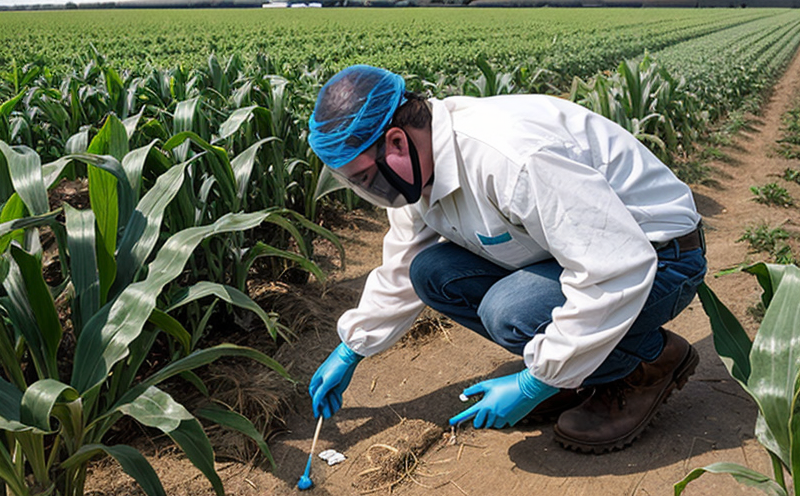Dinotefuran Residue Testing in Crops
Dinotefuran is a neonicotinoid insecticide used widely for crop protection against various pests. The residue testing of dinotefuran in crops ensures compliance with international standards and regulatory requirements to safeguard human health, animal welfare, and the environment. This service provides accurate quantification of dinotefuran residues through comprehensive laboratory analysis.
Our state-of-the-art facilities employ advanced chromatographic techniques such as High-Performance Liquid Chromatography (HPLC) with Photodiode Array Detection (PDA). These methods ensure precision and reliability, meeting the stringent demands set by regulatory bodies like ISO, ASTM, EN, and IEC.
Quality managers, compliance officers, and R&D engineers can rely on our services to maintain product integrity and ensure adherence to global standards. Our tests help in identifying potential risks associated with pesticide residues and assist in making informed decisions regarding crop treatment practices.
The process begins with the collection of representative samples from various parts of the field or storage units. Specimen preparation involves thorough washing, drying, grinding, and extraction using solvents suitable for dinotefuran. The extracted compounds undergo purification steps before being injected into the HPLC instrument for analysis.
The analytical method follows strict protocols outlined in ISO 17025 standards to ensure consistency and accuracy. Results are reported as parts per million (ppm) or parts per billion (ppb), depending on regulatory requirements. Our comprehensive reports provide detailed information about the levels of dinotefuran detected, along with recommendations for future actions if necessary.
Industry Applications
- Agricultural Research and Development (R&D)
- Pesticide Formulation and Quality Control
- Regulatory Compliance Monitoring
| Crop Type | Average Detection Limits | Common Analytical Methods |
|---|---|---|
| Grains (Wheat, Corn) | 0.1 ppm | HPLC-PDA |
| Fruits and Vegetables | 0.5 ppb | HPLC-MS/MS |
| Regulatory Bodies | Allowed Residue Limits (ppm) |
|---|---|
| European Union (EU) | 0.1-2.5 |
| United States Environmental Protection Agency (US EPA) | 0.3-4.0 |
Benefits
The benefits of our dinotefuran residue testing extend beyond mere compliance; they contribute significantly to enhancing agricultural practices and ensuring product safety. Compliance with international standards not only protects the health of consumers but also builds consumer trust in food products.
Our tests help in optimizing pesticide usage, minimizing unnecessary applications which can lead to reduced costs for farmers while improving overall crop yield quality. By detecting residues accurately, we aid in preventing contamination issues that could arise from overuse or improper application practices.
R&D teams benefit greatly from our services as they gain insights into the efficacy and safety profile of dinotefuran under different environmental conditions. This information is crucial for formulating new pesticides or improving existing ones, ensuring they meet both performance expectations and regulatory requirements.
Environmental and Sustainability Contributions
Dinotefuran residue testing plays a pivotal role in promoting environmental sustainability by minimizing the adverse effects of pesticides on ecosystems. By ensuring that residues do not exceed permissible limits, we contribute to preserving biodiversity within agricultural landscapes.
The accurate quantification of dinotefuran allows for better management practices, reducing the risk of non-target species exposure. This approach supports sustainable farming methodologies aimed at enhancing soil health and water quality without compromising crop productivity.
Our service also promotes responsible stewardship towards public health by adhering to stringent regulatory guidelines set forth by various authorities globally. Through rigorous testing procedures, we help maintain high standards of food safety, contributing positively to public confidence in agricultural products.





